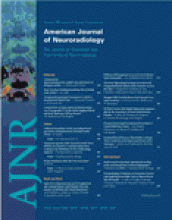Abstract
PURPOSE: Visual acuity (VA) disturbance other than field defect is important in evaluating patients with pituitary macroadenoma. The purpose of this study was to evaluate MR imaging appearances of optic nerves in patients with pituitary macroadenoma and to ascertain whether visual impairment was correlated with abnormality in optic nerve signal intensity.
PATIENTS AND METHODS: Twenty-seven patients with pituitary macroadenoma were examined. Optic nerves were evaluated on T2-weighted images and correlations of signal intensity abnormality with VA disturbance, visual field disturbance, degree of optic chiasm compression, pathologic findings of surgical specimen, and disease duration were statistically analyzed. Correlations between recovery of VA after treatment and the above-mentioned factors were also determined.
RESULTS: Coronal T2-weighted images demonstrated unilateral optic nerve hyperintensity lesions in 9 patients. Bilateral signal intensity abnormality of the optic nerve was seen in 5 patients. Signal intensity abnormality of the optic nerve was seen at the site of compression and in the ventral side of the tumor. These patients did not demonstrate signal intensity abnormality posterior to the tumor. Presence of such signal intensity abnormalities was correlated with the degree of optic chiasmal compression and with VA disturbance. Recovery of VA after treatment was correlated with disease duration.
CONCLUSION: Hyperintensity of the optic nerves ventral to the pituitary macroadenoma was associated with VA impairment. Recovery of VA after treatment was correlated with disease duration. MR imaging of the optic nerves can provide valuable information for management of pituitary macroadenoma.
- Copyright © American Society of Neuroradiology












